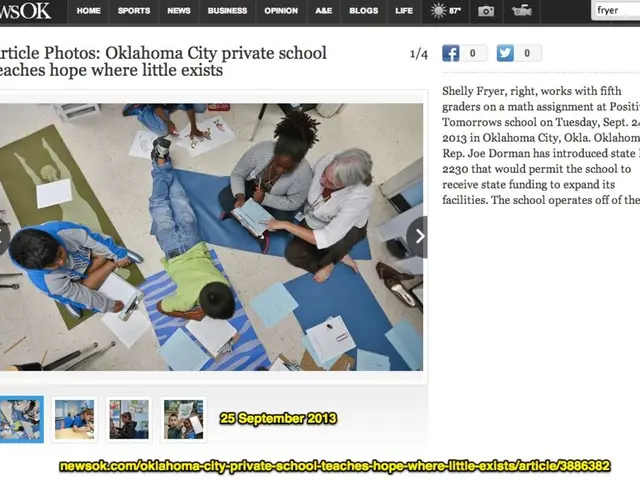Strategies for Repairing Disorganized Adult Attachment
learn about healing disorganized attachment - a complex and impactful attachment style affecting relationships and overall well-being.
Disorganized attachment, a type of attachment style, can have profound effects on a person's relationships and life. Fortunately, it is possible to heal disorganized attachment, move towards secure attachment, and develop healthy, fulfilling relationships.
Understanding Your Attachment Style
Knowing your attachment style is the first step towards healing. Take a quiz to find out your attachment style and begin the journey towards understanding yourself better[1].
Disorganized Attachment Explained
Disorganized attachment is based on research by John Bowlby and Mary Ainsworth. Attachment theory, developed by these researchers and others, explains human relationships based on early interactions with primary caregivers[2]. There are four attachment styles, which can be divided into secure and insecure attachment styles.
Secure attachment is a healthy attachment style, while insecure attachment includes three types: anxious, avoidant, and disorganized attachment[2]. Insecure attachment usually develops when a caregiver is unable to offer the emotional connection needed in childhood, although it can also develop in adulthood due to partners with insecure attachment.
Anxious attachment means that a person needs a lot of approval from their partner, while those with avoidant attachment tend to pull back and easily feel smothered. Disorganized attachment is a mix of these two styles. Those with disorganized attachment desire and fear connection at the same time, making them both anxious and avoidant[2].
Recognizing Disorganized Attachment
Those with disorganized attachment experience confusion, bouncing between states without a steady ground in their relationships[2]. They both deeply yearn for love and are fearful of being abandoned or rejected[2]. This often results from childhood trauma or neglect, as well as caregivers with substance abuse or unresolved trauma issues[2].
Children with disorganized attachment display dissociative behaviors towards their caregivers and try to please them while also withdrawing[2]. This can lead to a state of confusion and a lifelong struggle to develop healthy emotional connections.
Despite the challenges, those with disorganized attachment can possess strengths, such as strong emotions, creativity, charisma, and compassion for others[2]. Their ability to feel intense emotions makes them appreciate the subtlety in various areas of life, including the arts, music, and literature[2].
Healing Disorganized Attachment
While there is no easy "fix" to disorganized attachment, it can be healed through education, therapy, and self-awareness[3]. Many people have made profound realizations about themselves and their attachment style through courses like "Disorganized Attachment 101" and therapist support[4].
Research shows that those with insecure attachment can move towards secure attachment, leading to healthier relationships and increased overall happiness[4]. Healing disorganized attachment requires addressing the mind, body, and spirit through therapeutic interventions, mindfulness, interpersonal skills, self-awareness, supportive relationships, and educational resources[5].
Disorganized Attachment and Dating
Disorganized attachment can significantly impact dating life by causing unintentional relationship sabotage, being seen as manipulative, and leading to loneliness and anxiety due to unmet emotional needs[5]. By recognizing these patterns and working on understanding and healing their attachment style, individuals with disorganized attachment can form healthier, more fulfilling relationships.
Sources[1] [https://www.verywellmind.com/take-our-attachment-style-quiz-2794881][2] [https://www.verywellmind.com/what-is-disorganized-attachment-4177859][3] [https://positivepsychology.com/healing-disorganized-attachment/][4] [https://www.psychologytoday.com/us/blog/boundaries/202104/what-be-a-spice-lifer-that-disorganized-attachment-style][5] [https://sydneyaubrey.com/disorganized-attachment-and-dating/]
- Understanding your attachment style is crucial in the healing process of disorganized attachment, as it provides insights into your relationships and overall well-being.
- Disorganized attachment, a complex and impactful attachment style, can be traced back to research by John Bowlby and Mary Ainsworth, who developed attachment theory.
- People with disorganized attachment experience confusion and bounce between states in their relationships, deeply yearning for love while also fearing abandonment or rejection.
- Healing disorganized attachment requires a holistic approach, addressing the mind, body, and spirit through therapeutic interventions, mindfulness, interpersonal skills, self-awareness, supportive relationships, and educational resources.
- By recognizing patterns and working on understanding and healing their attachment style, individuals with disorganized attachment can develop healthy, fulfilling relationships.
- Education plays a significant role in healing disorganized attachment, with courses like "Disorganized Attachment 101" offering profound realizations about oneself and one's attachment style.
- The consequences of disorganized attachment in dating can lead to unintentional relationship sabotage, being seen as manipulative, and feelings of loneliness and anxiety due to unmet emotional needs.
- Research supports the possibility of moving from insecure attachment (including disorganized attachment) towards secure attachment, leading to healthier relationships and increased overall happiness.







